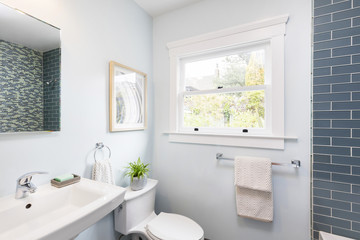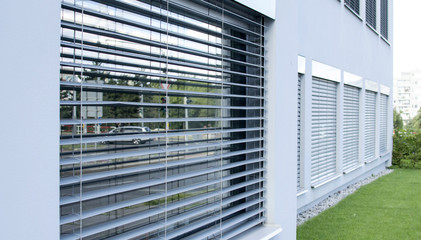Bathroom Remodeling Jacksonville is one of the best ways to add value to your home. Replacing outdated fixtures with modern upgrades is not only a visual improvement, but it increases functionality for you and future homeowners.
It’s important to note the difference between a remodel and renovation. A remodel includes cosmetic changes like new flooring and a vanity, but also improvements for safety. For example, adding blocking between wall studs for grab bars is a smart investment.
A good bathroom design plan is the key to a successful bathroom remodel. You have plenty of creative freedom in terms of style and layout but must ensure that the new space is up to code and meets your needs. The process of designing a bathroom involves several phases including space planning and selecting materials. It is a good idea to hire an experienced remodeling contractor for the best results. They can help you determine the right layout and make sure that all your ideas work with existing plumbing and electrical hookups.
The first step is determining your budget and setting a timeline for the project. Having a clear idea of what you want to accomplish will save time and money. It is also helpful to have a rough floor plan to share with contractors and to get accurate estimates. You can use an online bathroom design planner or software to create a virtual bathroom layout and to visualize how your changes will look.
If you have limited space, you can create a narrow bathroom layout by arranging the toilet and shower on the same wall. This will free up space for a vanity and may reduce construction costs by making it easier to access the plumbing. You can personalize this layout by choosing a unique furniture-style vanity or contemporary floating vanity and opting for a console-style sink instead of a traditional rectangular one.
You can also add a soaking tub to your bathroom design by building a niche in the corner. This will allow you to enjoy a relaxing soak and can make the room feel more spacious. It is a good idea to install a window above the tub to bring in natural light.
If you have more floor space, you can opt for a larger vanity and separate shower or tub. This will give you the flexibility to choose your own style and accessories and will make your space feel more open. You can also opt for a freestanding tub or a large shower with a door to create a spa-like space.
Design
The design of a bathroom is a key element to a successful remodel. It is essential to consider your goals for the space and who will be using it. For example, do you want to create a serene master bath or a practical powder room? This will help you determine the layout and design elements that will best suit your needs.
One of the most important decisions when remodeling a bathroom is what materials to use. There are a lot of choices available, including stone, wood, and ceramics. The materials used in bathrooms have evolved over the years, with new coatings and treatments that make them more durable than ever.
Another consideration when selecting bathroom materials is how long you want the renovation to last. A professional installer can help you choose durable, stylish, and functional products that will stand the test of time. They can also foresee potential complications and handle them efficiently, reducing the chance of costly errors.
A professional installer can also help you save money on your project by helping you select the right type of plumbing fixtures and fittings. They can help you choose fixtures that are more energy-efficient, which will reduce your utility bills. They can also suggest upgrades that will increase your home’s value and appeal to prospective buyers.
It is also important to consider the lighting in your bathroom. A well-lit bathroom is more appealing and inviting. It can also be easier to do tasks in. You should install ambient, task, and accent lighting.
If you are planning to replace the drywall, it is a good idea to use lead-free drywall. Lead can cause serious health problems, especially for pregnant women and children. This is a good idea for any area of the home that will be exposed to moisture and humidity.
You can also add a pop of color to your bathroom by adding wall art and handcrafted items. This is a budget-friendly and easy way to upgrade the look of your bathroom. You can even frame family photos to add a personal touch. Another affordable way to add a pop of color is to get creative with your tile. Colorful patterned tiles are making a comeback and can be used to create a custom mosaic look.
Materials
The materials you choose for a bathroom remodel will impact the look, durability and maintenance needs of your new space. It’s important to take the time to research the options available and select materials that will complement your design style and reflect your budget. The best way to do this is to work with a professional contractor who can offer recommendations and assistance in choosing the right materials for your project.
The first step in selecting bathroom materials is to decide what type of flooring you want to install. Wood, tile and laminate are all great choices for bathroom floors. You can also go with a hardy material such as vinyl or concrete for a more durable and low-cost option.
Once you’ve decided on a flooring material, it’s time to begin the actual construction process. If you’re making major changes to the layout of your bathroom, it is crucial to develop a floor plan at this stage so that electricians and plumbers can give you accurate estimates for the work they will need to do.
During this stage, it’s important to consider any accessibility requirements you may have. You might need to install a roll-in shower or other universal design accommodations, and this will add to the overall renovation costs. However, if you make these adjustments during the planning stage, you can ensure that your finished bathroom will be a space that is suitable for anyone who uses it.
Next, you will need to choose the fixtures for your new bathroom. For example, you may want to replace the toilet or tub with a more modern model. If you’re going with a modern design, you should consider using high-quality fixtures and materials to create an elegant and luxurious feel. This will help to increase the resale value of your home and make it more appealing to potential buyers.
Another good choice for bathroom fixtures is engineered quartz, which is a mixture of natural stone and resin that mimics the way stone is formed naturally. It is durable and easy to clean, and it comes in a wide variety of colors and finishes. In addition, it’s a great choice for countertops and vanity tops.
Budget
If you’re planning to remodel your bathroom, it’s important to have a realistic budget in mind. This will help you avoid overspending and ensure that your project is completed on time and within your desired budget. A good way to start is by determining what features are most important to you and then getting quotes from contractors. It’s also a good idea to include a contingency budget of 10% to 20% to cover unexpected expenses.
The budget for a bathroom remodel depends on the scope of the project. Some remodeling projects may require costly alterations, such as rerouting electrical wiring or changing the floor plan. In these cases, it’s best to hire a professional contractor. They will know how to meet building codes and safety regulations while minimizing costs.
A remodeling project is a great opportunity to update the look and feel of your home. However, homeowners should be aware that the cost of a remodel can add up quickly. This is especially true if you’re working with high-end finishes.
There are a few ways to keep your remodel budget in check, including shopping around for fixtures and materials. You can also save money by reusing existing cabinets or buying used ones. Additionally, it’s a good idea to consider installing new drawer pulls and knobs, which can make an inexpensive update that can transform the look of your bathroom.
Aside from the cost of fixtures, a remodel can also involve the installation of new plumbing. This can be expensive, especially in California where labor and material costs are higher than the national average. In addition, the size of your bathroom may impact the cost of installation. For example, a larger bathroom may require more expensive flooring and a new tub or shower.
One of the biggest challenges when doing a bathroom remodel is choosing the right contractor. If you’re not familiar with the industry, it’s a good idea to get referrals from friends or family members. In addition, you should read reviews online before making a final decision.
It’s essential to find a trustworthy and reliable bathroom remodeler. Not only will they be able to provide you with quality work, but they’ll also be able to guide you through the process and help you stay on track.














